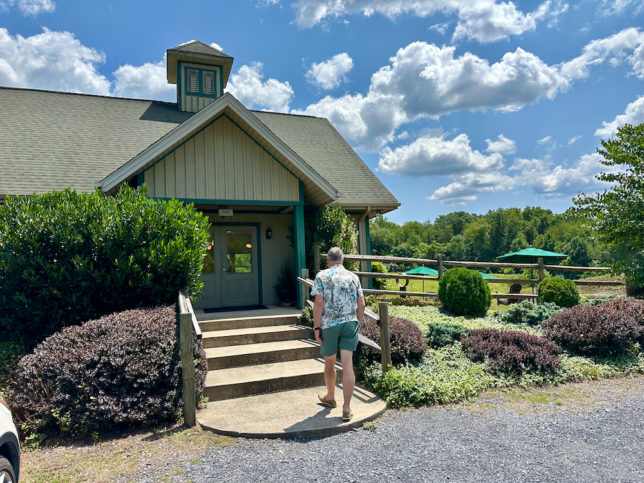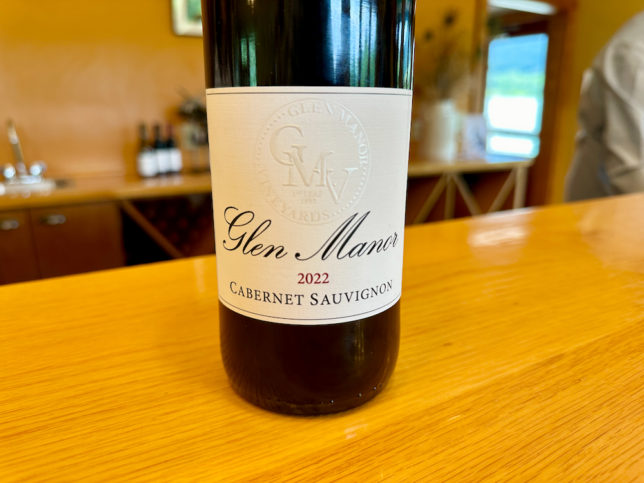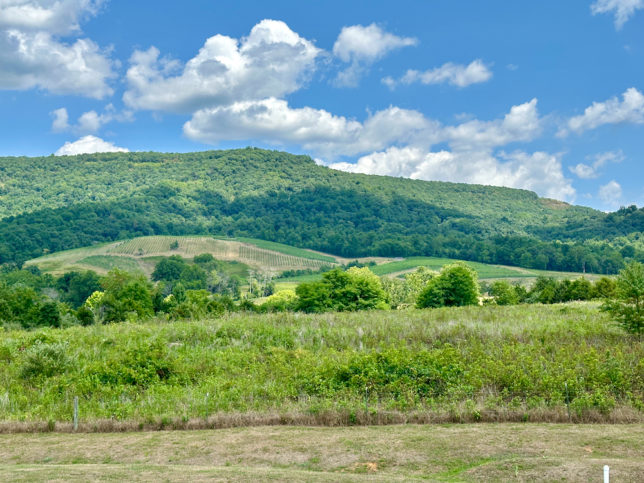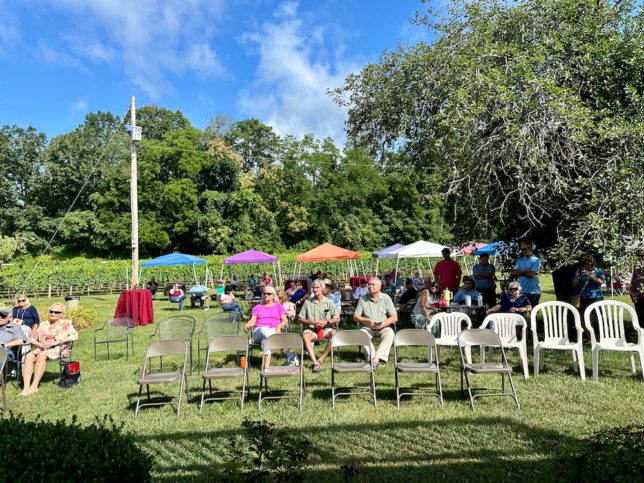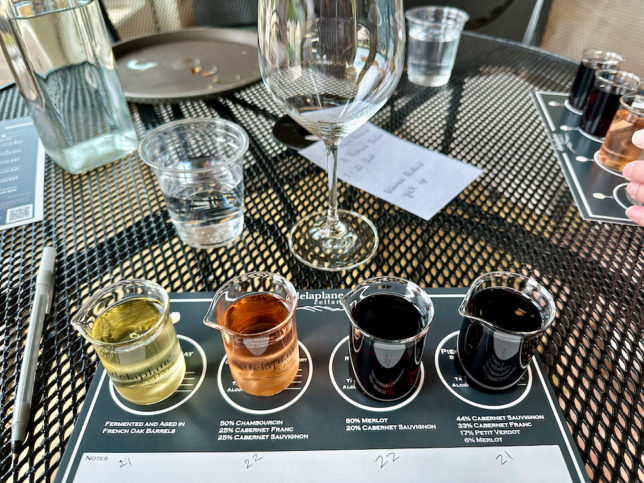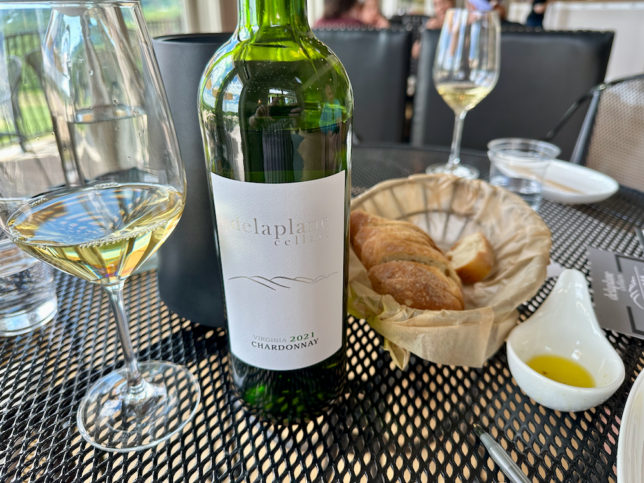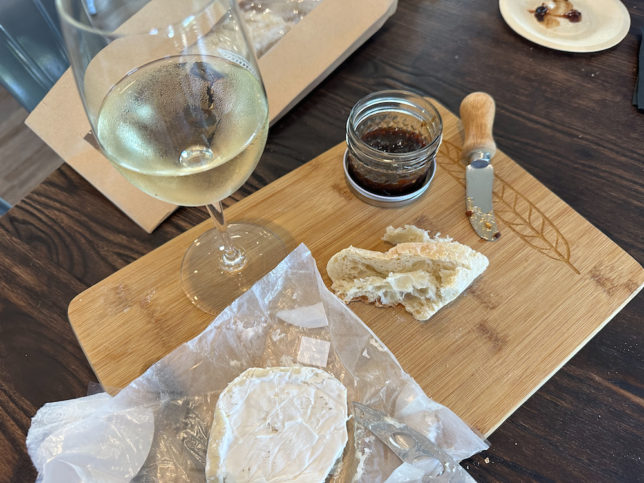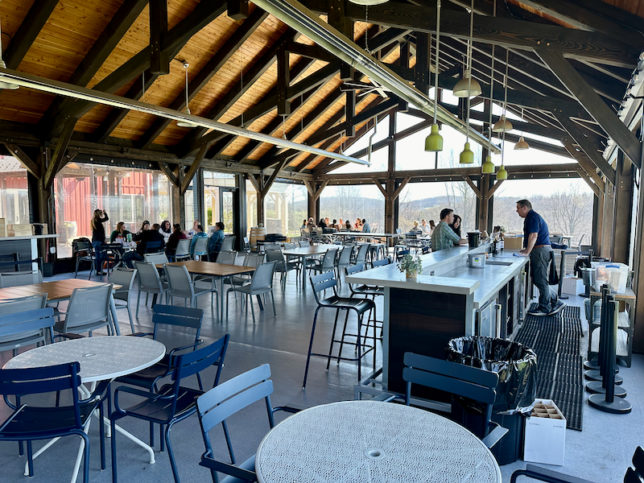Category: Wines
100% Cabernet Sauvignon
https://ballymenachamber.co.uk/?p=108zp1e7y1u The weather was so beautiful on Saturday we decided to take a drive out to Glen Manor Vineyards to check out the current line up of wines on the tasting menu. We also decided to bring some lunch to enjoy as well.
https://chemxtree.com/0axl0q3h We started our visit with a tasting at the tasting bar. We tasted three whites (one was a rosé) and three reds. All of the wines were well made and it was difficult to pick favorites! We did enjoy the 2023 Morales Rosé. We enjoyed the freshness and bright fruit. This one is perfect for summer meals.
https://www.plantillaslago.com/mjk93ii 
https://ottawaphotographer.com/xxxwtlvjbp We were excited to see the 2022 Cabernet Sauvignon on the menu! This is the first 100% Cabernet Sauvignon that Glen Manor has produced. It spent 10 months in mostly neutral barrels. It’s a nice summer red that would pair nicely with grilled meats. What a treat! We put this one on our list to bring home.
https://www.wefairplay.org/2025/03/11/jp4p2re4 After our tasting we took the advice of our tasting associate and had our lunch on the crush pad. There was a cool breeze, very few bugs, and a gorgeous view. We selected the 2023 Morales Rosé to pair with our lunch items. The weather was as beautiful as the view and the rosé was refreshing. While enjoying our lunch and wine we made a list of the wines we planned to bring home.
Before leaving we picked up half a case of wine. We always enjoy our time at Glen Manor. If you haven’t been lately, plan a trip to Glen Manor soon! And when you do, tell them Virginia Wine Time sent you!
The Cajun Cooks Crab Cakes
https://www.andrewlhicksjrfoundation.org/uncategorized/2wi22l3mc Check out Warren’s latest video to see which Virginia Wines he pairs with his crab cakes.
Gray Ghost Vineyards Celebrates 30 Years
https://www.infoturismiamoci.com/2025/03/t40212d3hp Gray Ghost Vineyards opened on July 9, 1994. The only wine they had to pour on that first day was Vidal Blanc. They have been producing award winning wines ever since.
Buy Zolpidem Sleeping Pills Gray Ghost Vineyards celebrated its 30th anniversary on Saturday and Paul and I were privileged to be the honored guests of the day. I delivered a short speech during the opening reception of this memorable occasion. You can read the speech here. During the opening reception Al Kellert, Amy Payette and Donna Comer from the Rappahannock Board of Supervisors spoke.
https://www.plantillaslago.com/5o9ksbq1 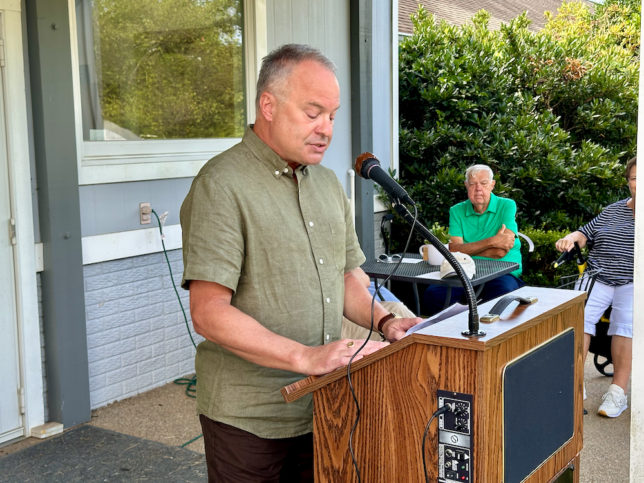
https://www.salernoformazione.com/d2j7a7xxr0 
After the opening reception guests were treated to a taste of the 2023 Vidal Blanc. This wine was chosen because it was the first wine they poured when they opened 30 years ago. Its tropical notes hit all the right marks on a very warm afternoon. It was a delicious way to begin celebrating Gray Ghost.
https://www.mdifitness.com/7d270ovcx 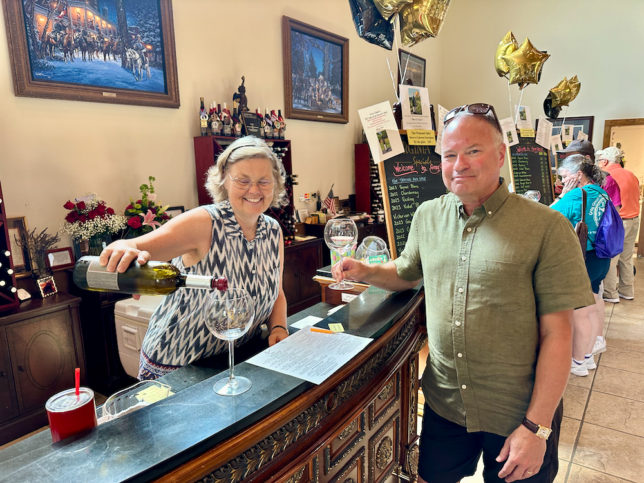
https://www.varesewedding.com/nxn79j7s5qr As part of the special day, guests could taste the current line up of wines including the new 2022 Ranger Reserve. Guests could also enjoy a library tasting of the 2005 Merlot, the 2013 Petit Verdot, the 2003 Cabernet Sauvignon and the 1998 Reserve Cabernet Sauvignon. Paul really enjoyed the 2005 Merlot and the 1998 Reserve Cabernet Sauvignon.
https://www.onoranzefunebriurbino.com/xlfvo8ux 
Guests were also treated to a sneak peek tasting of the 2021 Reserve Cabernet Sauvignon. Al Kellert personally poured the wine and discussed it’s evolution. What a treat! There was live music and “Talk of the Mountain”, a favorite food truck noted for its fabulous crab cakes, was also at the event to offer its famous seafood menu. I enjoyed a crab cake with a glass of the 2021 Reserve Chardonnay. Paul had the Reserve Chardonnay with chicken nuggets. Yes, chicken nuggets.
We were truly honored to be part of this unforgettable celebration at Gray Ghost Vineyards. As we look forward to the winery’s continued success in producing its award-winning wines, we encourage you to plan a visit to Gray Ghost Vineyards to sample its current releases. When you do, don’t forget to mention that Virginia Wine Time sent you!
Back on the Trail
June was a very busy month for Warren and I. Between the two of us we traveled to 5 different states for family vacations, family reunions and a special trip for a baptism for Warren’s god child. Things have calmed down for us so this past Sunday we decided to get back on the wine trail and visit a couple of Virginia wineries.
https://ottawaphotographer.com/blk5ibuns 
Buy Zolpidem Er We started at Delaplane Cellars. Warren is a club member there and it was time to pick up club wines and taste the latest offerings. We started with a seated tasting of the chardonnay reserve, rosé, Duet and the Piedmont Station. While we enjoyed all the wines, the 2022 Duet was our favorite. The merlot dominate blend presented wonderful berry flavors, violet, fall spice and a juicy mid palate. We know we’ll enjoy this one during cooler months.
Buy Zolpidem Overnight After our tasting we decided to share a bottle of the stainless chardonnay with a warm baguette and olive oil for dipping. Perfect pairing for a warm day. Before leaving we picked up our club wines and a few other favorites.
https://ottawaphotographer.com/vm7kygmsewu Our second stop of the day was Slater Run Vineyards. We hadn’t visited Slater Run for a few years so it was time to return to see what wines they had to offer. We made a reservation for a bar tasting and our tasting associate, Kathy, treated us to almost the full menu of wines.
https://www.plantillaslago.com/ouhpo4so 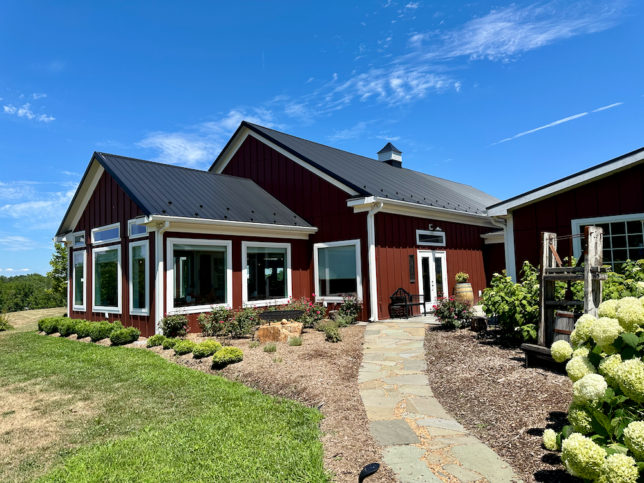
It was really difficult to pick out favorites since all the wines were well made and offered flavors for almost any palate. I took a liking to the 2022 Steel Chardonnay and Warren really enjoyed the 2022 Chardonnay reserve. The heat of the day may have had something to do with our choices. The reds were also very strong and reminded us of (again) cooler months ahead and what we might pair with each wine. Decisions, decisions!
https://www.wefairplay.org/2025/03/11/5ftz1a6m45 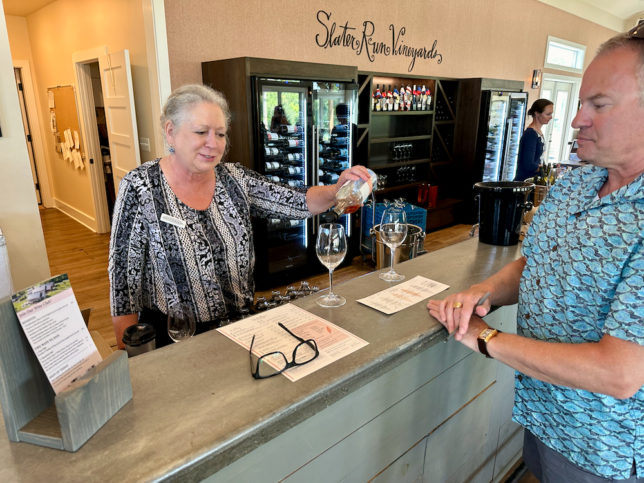
https://municion.org/qxrb55u After our tasting we enjoyed a glass each of the 2022 Steel Chardonnay with a baguette, brie cheese and some of their chutney. While enjoying our nibbles we discussed what wines to bring home and decided to join the Wine Club! We used to be club members but let our membership lapse. But we are back on the Wine Club list and came home with a case of wine!
We had a great day enjoying wines and getting back on the wine trail. We plan to keep up with our winery visits in the months to come. If you haven’t been to Delaplane Cellars or Slater Run Vineyards lately, plan a trip and when you do visit tell them Virginia Wine Time sent you!
The Cajun Cooks Filet Mignon topped with Crab Meat
The Cajun Cooks Smothered Chicken
An Afternoon at Cana
On Saturday we met some friends at Cana Vineyards and Winery to taste some wine and enjoy the afternoon.
Clonazepam Quick Delivery Online We selected to do the bar tasting outside in the Sunset Pavilion. We tasted through the current line up of wines and highlighted our favorites. The consensus was the 2021 Chardonnay was our favorite white wine. We were split between the 2019 Le Mariage and the 2020 Unité Reserve as our favorite red wines. Both were very good. Our friend Michael really enjoyed the slight sweetness of the 2022 Petit Manseng. He also enjoyed a taste of the 2022 Rhapsody in White. We had a chance to chat with Don, the tasting room manager. He let us know what was new at Cana and suggested we try a few more wines. He provided us a taste of the 2022 Albariño and the 2021 Norton. We all agreed the 2022 Albariño was our favorite of the extra pours.
https://www.onoranzefunebriurbino.com/i2gstejq9g 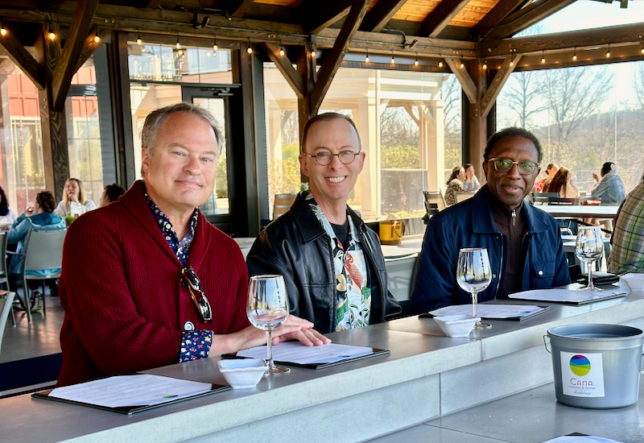
https://www.varesewedding.com/ib28tm9 After our bar tasting, we selected some food items to have for lunch and selected both the 2022 Rhapsody in White and the 2019 Le Mariage to enjoy with our lunch items. It was a fun afternoon of food, wine and friends. While finishing our lunch and wine Melanie Natoli, the winemaker came by and chatted with us about her wines and what she’s working on. It was nice to chat about Virginia wine with her. She is the first and only woman (so far) to wine the Virginia Governor’s Cup with the 2019 Unité Reserve.
Before leaving we bought some of our favorite wines and said our goodbyes. We had a wonderful afternoon at Cana and suggest you plan a trip to Cana soon! And when you do, tell them Virginia Wine Time sent you!
Drink or Hold? A Conversation about Cellaring Virginia Wines
Wine enthusiasts are probably familiar with the drink or hold concept. The popular Wine Spectator magazine features drink or hold charts monthly to alert readers whether vintages from particular wine regions are ready to drink now or held (cellared) for extended periods. When we began our travels about Virginia wine country over nineteen years ago, most Virginia wines, particularly reds, were probably ones to drink at the moment. However, an influx of better winemakers and even better vineyard practices now allows us to consider drinking or holding Virginia wines crafted from exceptional vintages like other wine regions in Europe and the United States.
We interviewed five winemakers from five different regions in Virginia to get their answers to the questions surrounding the call to either drink or hold. They include Lee Hartman of Bluestone Vineyards, Jon Wehner of Chatham Vineyards, Melanie Natoli of Cana Vineyards, Stephen Bernard of Mountain and Vine Vineyards and Winery, and Justin Rose of Rosemont Vineyards.

Drink or Hold Questions:
https://www.infoturismiamoci.com/2025/03/4e0z95qwsh4 1. Which red grape varieties grown in your AVA lend themselves to aging potential? Do white varieties also have the ability to age well? If so, what are they?
Acidity, tannins, and alcohol determine a red wine’s ability to age well. A brief primer on these elements may read like this: 1) the higher the acidity, the longer a wine can age; 2) higher tannins provide firmness and structure to carry a wine over time; and 3) “hot” alcohol levels quickly overtake fading fruit so lower alcohol levels are preferred. A balance of these elements produces red wine that can age well. We frequently hear from winemakers that good wine is made in the vineyard, which means that proper vineyard management and Mother Nature both play a role in whether these components of cellaring wine are attainable. Unlike Napa Valley in California, Virginia’s wine-producing regions are a collection of micro-climates with varying temperatures, rainfall amounts, elevations, etc., affecting fruit quality and acidity levels, tannins, and alcohol. Lee Hartman posited that in his region, “the Shenandoahs are unique in their location between the Blue Ridge and Alleghenies.” Therefore, the higher elevation and protection from precipitation plus cooler temperatures allowed him to craft wine with brighter acidity and, thus, aging potential. Other wine regions in the state benefit from their unique locations, so it is always advisable to chat with a winemaker or tasting room associate about a winery’s particular microclimate.
So, how did our winemakers vote on the question of red wine grapes in Virginia and their aging potential? Petit Verdot earned the top votes for the grape variety that best lends itself to aging potential due primarily to its heavy tannins. Red blends garnered several mentions, especially if merlot and petit verdot are part of the mix. (Readers may already know Bordeaux as a wine region known for its age-worthy red blends.). Justin Rose noted that sometimes Merlot produces age-worthy wines; Jon Wehner confirmed that a 2002 Merlot from Chatham, though at its peak, still held its own. Rose also tossed Tannat into the ring, while Lee Hartman added Chambourcin to the list due to its high acidity.
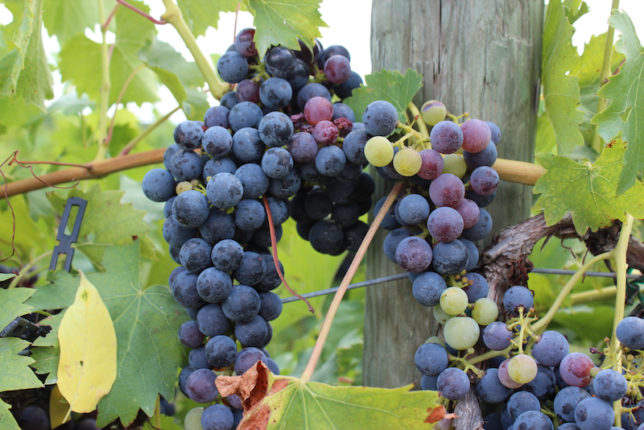
White wines can undoubtedly be aged, too, whether they hale from European regions, California, or Virginia. Most of our winemakers gave the nod to Chardonnay, with Jon Wehner giving a 5-7year window for oaked Chardonnay. Bernard cautioned, though, that heavily oaked chardonnays can produce a broader style that, along with higher alcohol levels, does not age well. However, Melanie Natoli sang the praises of Petit Manseng, as did Lee Hartman, and Natoli declared that aged Petit Manseng had the potential to shine as well as aged Rieslings. Justin Rose suggested the hybrid Chardonel grape as another candidate with the best vintages providing a 5 to 6-year window for aging.
https://www.fogliandpartners.com/zkqo2r1l 2. Research indicates that very few wine consumers “hold” or age wines. With this in mind, do you advise consumers, especially those tasting in the tasting room, to “hold” certain vintages? What feedback have you gotten from consumers once they have opened a bottle from a particular vintage “hold”? Are there any pleasant surprises from consumers who held on to a “drink now” vintage such as 2018?
Our panel of winemakers subscribed to my philosophy: multiple purchases during exceptional vintages and then drink one now, another at a mid-point, and another at its peak time in the bottle. (Lee Hartman refers to the last bottle of this strategy as the “cellar defender.”) Most Virginia wines are purchased at a tasting room rather than a wine shop, so our winemakers are at an advantage to suggest cellaring during stellar vintages such as 2019. Melanie Natoli releases red wines at Cana once they have had enough time to age in the bottle first, so “I’m releasing at a drink or hold time, not just hold {time}. However, Stephen Bernard pointed out that this decision boils down to consumer preferences, especially since they are tasting wines in the tasting room and have already made decisions regarding preferences and perhaps even cellaring. Those who prefer young wines will do so, while others who prefer savory nuances will cellar.
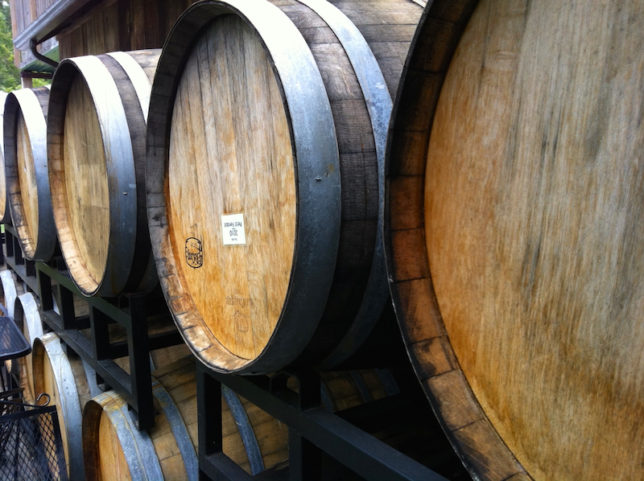
https://www.onoranzefunebriurbino.com/8k92yvcnty5 3. What are the risks of “holding” wines even from the best vintages?
The resounding answer to this question was “disappointment.” Jon Wehner cautioned that cellaring ultimately leads to a loss of bright fruit and acidity that gives way to complexity, spiciness, and smoothness. Melanie Natoli added that this process is due to the dynamic nature of wine that is constantly evolving, and for her, aged wines that lack acidity seem “tired.” Our winemakers also agreed that storage habits can contribute to the downfall of even the best vintages. For example, storing wines in the kitchen and above the refrigerator is a deadly practice. Do you want to protect that “cellar defender”? Be aware of best practices for cellaring to be sure that the last drop will bring smiles rather than tears.
4. Do natural corks have an advantage over synthetic corks or screw caps regarding aging/holding?
The answers from the winemakers on this question varied. All agreed that natural cork leads to greater risk due to inconsistency if cellaring exceptional vintages is the goal. Cork taint cannot be decanted away, and crumbling corks, which have tasters fishing cork particles out of their wine glasses, are two possible hazards of aged wines enclosed with natural cork. Jon Wehner has moved away from natural cork in favor of a composite product from Nomacork, while Lee Hartman is switching to agglomerated corks. While Justin Rose has been generally pleased with synthetic corks, he will return to high-grade natural cork for reserve wines. Melanie Natoli cited fears that synthetic corks will age a wine much faster and prefers natural cork. Likewise, Stephen Bernard prefers tried and time-tested natural cork and noted advancements in TCA-free corks such as Diam.
The crunch of screw caps is increasingly replacing the familiar pop of corks being released from wine bottles, but these closures cannot transfer oxygen that allows wines to age well. However, Melanie Natoli noted that Cana’s 2015 Albarino and Petit Manseng, both screw-capped, were still holding up quite well. Lee Hartman and Stephen Barnard both favor screw cap closures for wines meant to be enjoyed while young, especially brighter, fruitier white wines.
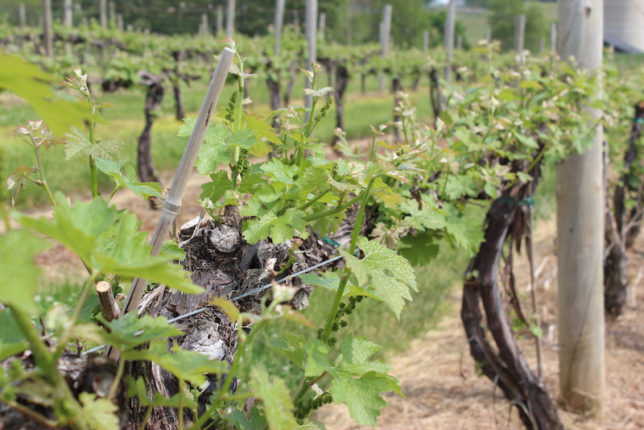
5. Do you tend to drink wine early or hold it if possible? Explain.
So, what were the preferences of our winemakers? Jon Wehner and Justin Rose prefer to hold exceptional vintages. Although Stephen Bernard generally enjoys wines early, as a winemaker, he cellars wine to taste and then provides feedback to himself and his customers. Melanie Natoli drinks and holds depending on the vintage and the producer. Like her colleague, Stephen Bernard, she maintains a cellar of every Cana vintage to taste over time and learn. Lee Hartman and his wife are in two camps. Lee enjoys younger wines that are fresh and lively, but his wife would instead enjoy older wines as they peak and become more complex. For those in a similar situation, Lee Hartman suggests decanting a young wine and allowing it to breathe for a while. Still too tight? Store it properly and enjoy the next night. Our winemakers all agreed that appreciating wine, regardless of age, should be a fun experience to share with others.
In the end, wine should be enjoyed whenever the consumer wants to. Lee Hartman cautioned against overthinking the whole matter, aptly stating, “There’s a time for Barolo and a time for Nouveau…” We concur with this statement. While collecting exceptional wines from anywhere is fun, the bottom line should be enjoyment without judgment.
Below is a general consensus on how our winemakers rated vintages from 2019 through 2022.
2019-Very Good-Hold up to 2030
2020-Average-Drink/Hold up to 2026
2021-Good to Very Good-Hold (when released) potentially to 2030
2022-Very Good-Hold (when bottled and released) potentially to 2035
2023? Make room on your wine racks when this vintage is bottled and released, as all of our winemakers described this vintage as a potential blockbuster.
We thank all of the winemakers who participated in this survey. We know their time is precious. Please plan to visit the winemakers and wineries mentioned in this article and engage them in a conversation about vintages, aging, and all things that make tasting their wines a memorable experience. Please mention that Virginia Wine Time sent you!

